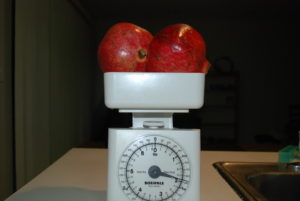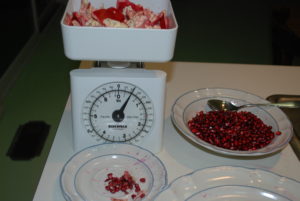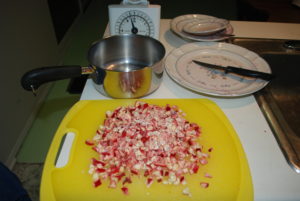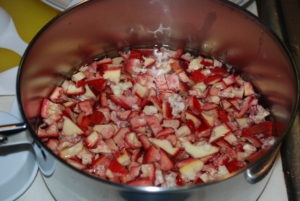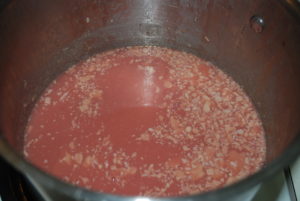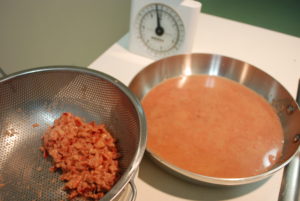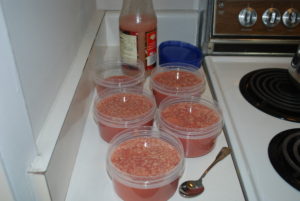When is a goal more important than the personal success of a leader or teammates? When it is about long term success. Current business practice has become more focused on quarterly profits to please shareholders and board members and it has cut into spending for employee development and retention and for research and development in too many industries.
The simple message (paraphrased) “Make the mission more important than the leader or followers” was a main take home point in a book I just read. when a book is important I like to read it in one sitting as my memory works kind of like an e-book reader, I want to upload the entire file in one batch.
I recently saw a one-liner question along the lines of if you were on a deserted island what is the one book that you would want to have with you (also paraphrased). I thought at the time, tough question, and I didn’t have an answer. All the books that I’ve read across my lifetime are all still sloshing around somewhat in my memory bank so I’m never deserted. They are like good friends I can browse whenever I want. After uploading this latest one into my memory bank I came up with an answer – it wouldn’t be the one to have on the island, Bartlett’s Familiar Quotations would be. I have a copy but I also have it bookmarked on my laptop. It gives favorite quotes or passages from many great works from earlier eras which can be memory triggers for the larger work or just set the imagination to work filling in whatever may be generated by the words of wisdom.
The latest book is slightly dated for a business world type book as its references are to the 90’s. The concept of faxing is included. Having also recently read some more dated books and long papers about economics written by economic theorists from the 1800s, (Principles of Economics, by Carl Menger, a translation in English), and 1950s, 60s and 70s (fee.org) I will just point out that it is very interesting to see social differences change across time. Women weren’t really mentioned much at all in relation to the business world in the older economic papers and the mention of female workers in the book from the 90s would likely no longer be included if the book was edited for today’s market. Women are mentioned as bosses occasionally but secretaries and receptionist references are always female throughout the book. A section on empathy offers the example that if your receptionist seems in a bad mood find out why before sharing the fisher-person and mer-person joke that you had in mind. – My point – times have changed a lot and for the better overall.
Back to the main point – this book I just read is the most valuable I’ve ever read. I might not pack it for a deserted island but I will never forget it and it made me feel like I should finally right that Last Will and Testament that I’ve never bothered writing, just so that I can leave the book to someone. Now you, my dear reader, do not have to wait until I kick the bucket in order to find out if I left the book to you. You can just go to a resale shop and look for a used copy of your own. It includes a lot of quotations too including many I was not familiar with along with a discussion of humor and how to improve your own ability to tell a joke. The tone is kind and gentle, self deprecating humor or persuasion tactics are more powerful is also a take home point that we all might benefit from in our business or personal lives.
Secrets of Power Persuasion; Everything You’ll Ever Need to Get Anything You’ll Ever Want, by Roger Dawson, 1992, Prentice Hall. It has also been reissued in paperback or can be picked up used online barnesandnoble.com. The author gained his business experience in the real estate industry but went on to become a popular speaker and author on the topic of sales and negotiating. The book is written fairly open ended though rather than being directed only to salespeople or business executives. Examples include common parenting and relationship issues as well as sales and other negotiating issues a business person might run into and the tactics are useful for the buyer as well as the seller. No one wants to walk off the car lot with a car they didn’t want or a timeshare week in a vacation resort that they couldn’t afford.
The ideas for helping to learn other’s motivations can also be helpful for learning to recognize your own. One example has fast-forwarded into modern news – “a Donald Trump” type person is paired opposite of “a Mother Theresa” type person as examples of people at the extremes of “self-centered versus externally centered” motivations. Recognize what motivates someone to help identify what might motivated them to make a purchase or other decision. The self-centered motivated individual looks at how things benefit themselves versus the externally motivated person looks at how things would benefit others:- “The self versus external sorting continuum” “Narcissists – Persuaded by how it affects them+ and “Martyrs – Persuaded by how it affects others“. (page 154, Secrets of Power Persuasion)
Tips for working for a narcissist boss: (How to Work for a Narcissistic Boss, hbr.org)
It can be difficult to recognize that extreme narcissism is not typical behavior if you grew up with it in the family (Toxic Parents or Emotionally Immature parents) and for an empathy- external oriented person, it can lead to adult relationships that are at risk for not recognizing the need for safe boundaries against the self-oriented demands of a narcissist. (The Toxic Attraction Between an Empath and a Narcissist, elephantjournal)
The techniques in the book include many strategies that I’ve read about in psychology and other business books, as well as many personal strategies of the author’s that may have been developed from other business strategists that I’m not familiar with or are clearly his own tips learned from his experiences. The style of teaching the material is easy to follow and has helpful summary point lists.
A sales pitch for the book, or self-deprecating humor example from the author’s past, is from the section on how-to-tips for remembering people’s names:
‘Similarly, there is no easy way to remember names. As my high school teacher used to say, “Don’t waste any time looking for an easier way to do this. If there were an easier way, Roger would’ve found it years ago.”‘ – Secrets of Power Persuasion, page 217.
Why would a dietitian care about power persuasion techniques? Because it is actually fairly difficult to try to encourage change in personal habits. The author includes as an example in one area his own weight loss plan which was effective for him. It is valid but time and additional research has modified one dietary point – focusing exclusively on cutting fat calories may not be as helpful as working to reduce simple carbohydrate calories as well, either from sugar or refined grains and white potato products. The more processed a food the quicker it can turn into blood sugar which can increase insulin which can increase fat storage which can be made from calories from fat, carbohydrates or alcohol, and as a double whammy, increased insulin levels can cause an increase in appetite leading to more eating.
Regarding something I saw recently regarding a weight loss fad – gluten free products as currently marketed are often based on very refined starches and are often lower in fiber and nutrients than a whole grain item. I do not recommend gluten free diets for anyone who is not gluten intolerant or for weight loss purposes. It is not an easy diet to follow for those who truly need to stringently exclude all gluten for autoimmune reasons and it is not a joke for them either. The problem can be life threatening and cause long term symptoms in digestion and in other areas of life. People with thyroid problems might benefit from trying gluten free diets as the protein chemically is similar in shape to the thyroid hormone and autoimmune thyroid problems may have something to due with autoimmune gluten reactions for some people. If interested seek a qualified nutritionist or Registered Dietitian to help create a balanced diet. I personally use whole grain rice, quinoa and amaranth and other gluten free whole grains rather than buy many commercially available gluten free products. In addition to being low fiber they often include corn which I have found also affects my own autoimmune symptoms.
So why would a dietitian care about persuasion tactics – because pomegranate peel is not on anyone’s menu plan – yet, that I know of, except for my own and I find it amazing. The blueberry juice did make it more palatable as a diluted beverage but adding a chaser of fennel seeds as a follow up snack helped even more. I tend to eat about a teaspoon of them after most meals now as they seem to help with digestion. After trying the pomegranate extract as a beverage when I made a fresh batch (I had stopped trying it in quantity as it is very acidic) I had a couple teaspoons worth of the fennel seeds after trying the blueberry/pomegranate mixture and it helped. Why would I bother trying it in quantity – because it has an amazing mood boosting effect and helps the numbness in my fingertips problem more when I use more of it rather than only a few spoonfuls added to my bowl of soup.
Pomegranate seeds and the fennel seeds are quite crunchy. I’ve had a couple people mention they can’t chew such crunchy things without pain – that may be a sign of inflammation throughout the body rather than tooth or jaw trouble. During the worst of my inflammatory years I also developed pain with chewing my favorite crunchy things like raw carrots, apples, and my favorite whole grain rice cakes which are more dense then the more commonly available type.
One learns by trying – a motto of mine from my childhood. I don’t know where I heard it or if I just made it my own slogan. Maybe it is a modification of “If at first you don’t succeed, try, try again.” That is one my mother would say.
The idea of making a Last Will and Testament to leave the book to someone is kind of a joke – the book cost me ten cents. The pomegranate peel extract probably cost me even less figuring people buy the fruit for the juicy seeds, but information has more value than dollars alone. In the recipe post I included a lot of detailed measurements about yield for food industry and dietitian type people to show the percentage that is currently being thrown away when instead it might be able to be made into a valuable health boosting product.
So what is the mission that is more important than the leader or followers – to me – effective health care that supports a more sustainable population. Whether you believe the Earth is 6000 years old or millions, the more important question currently seems to me whether we want humans and other species to still be around 6000 years from now.
The paraphrase I used in the title of this post is from the last chapter in the book (pp 276-289) and the example given is a story about a team that reached the top of Mount Everest – one team member that is but the team rejoiced together via audio and the team got the credit – no one person is going to reach the top of most any mountain all by themselves. I haven’t climbed a mountain or seen Mount Everest but I have seen Mount McKinley and met a wonderful Japanese couple at the base. My family were camping near their camp and one night they invited us all to join them and my main memory from this childhood adventure was the dried seaweed they shared with us. It was like paper but you could eat it – I was enchanted. And all of us enjoyed the wild berries we could pick in the wilderness area. Our planet is a treasure worth far more than dollars.
A sustainable vision of a future Hawaii is described in an article suggesting we need more imagination to help guide us towards a peaceful and sustainable future: We Need Radical Imagination, Wake Up World.
Imagination is a critical part of creativity and innovation for any new product development whether in the area of healthcare and diet or sustainable agriculture and infrastructure.
A discussion of how leadership can help foster creativity in a team – a main point is to give it space to grow naturally rather than demands and time limits: How to Nourish Your Team’s Creativity. hbr.org
A book I mentioned in a recent post reinforces some of the concepts in Roger Dawson’s book but with more recent business examples:
For more information on thinking creatively and effectively working towards a better solution to difficult decisions rather than feeling forced to choose one of two less preferred choices I recommend the book Creating Great Choices: A Leader’s Guide to Integrative Thinking, by Jennifer Riel and Roger L. Martin (2017, HBR) (hbr.org/Creating Great Choices)
Disclaimer: Opinions are my own and the information is provided for educational purposes within the guidelines of fair use. While I am a Registered Dietitian this information is not intended to provide individual health guidance. Please see a health professional for individual health care purposes.

